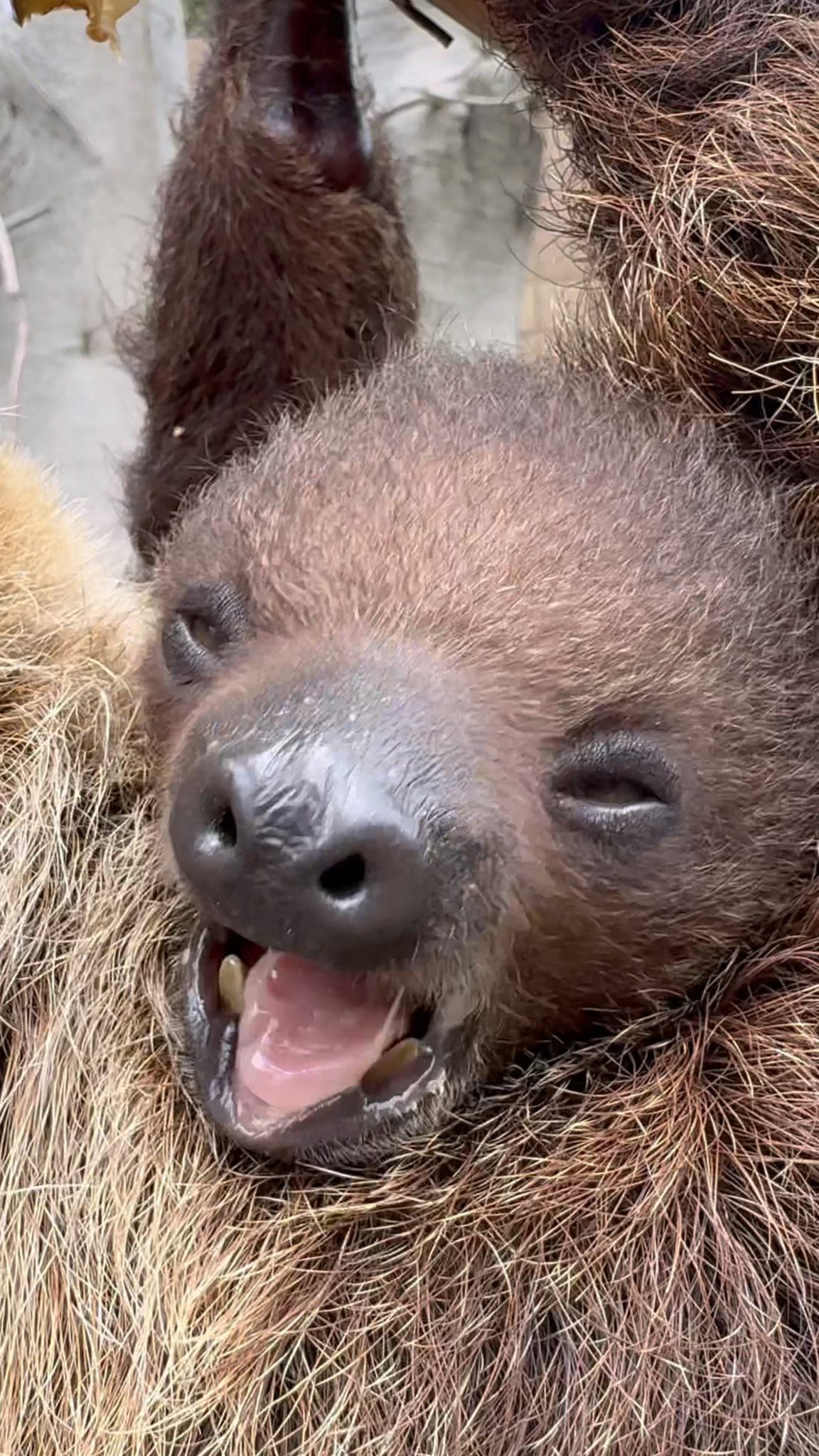- Introduction to Xena and her cub, Cashew: Background and significance
- The behavior and development of sloth cubs: Cashew’s early life and growth milestones
- Importance of naming animals in zoos: Enhancing conservation efforts and public engagement
- The role of zoos in conservation and education: San Diego Zoo’s initiatives
- The impact of human activities on sloth populations and conservation strategies
Xena, a resident sloth at the San Diego Zoo, recently gave birth to a cub named Cashew. Cashew has quickly captured the hearts of staff and visitors alike. This little sloth is not just a delight to observe, but he plays an important role in furthering conservation efforts. Understanding the early life of a sloth cub like Cashew helps us appreciate the complexity of these creatures and the challenges they face in the wild.
In the initial stages of life, sloth cubs are entirely dependent on their mothers. Cashew, at three months old, is no exception. During this time, he spends much of his day attached to Xena’s side. This attachment provides warmth and security, critical components for his survival and development. Cashew is beginning to sample solid foods, a significant milestone that marks the transition from a milk-only diet to a diverse intake necessary for his growing body. Napping occupies a large part of his day, indicative of the energy conservation strategies sloths have evolved over time.
Naming zoo animals like Cashew isn’t just a whimsical endeavor. It serves an important purpose in the larger scope of conservation. When animals have names, they become relatable to the public. This connection fosters a deeper understanding and appreciation, driving interest in conservation efforts. Named animals often become ambassadors for their species, helping educate the public on the importance of preserving habitats and biodiversity.
The San Diego Zoo has long been at the forefront of wildlife conservation and educational outreach. Through various programs, the zoo not only protects endangered species but also educates millions of visitors about the delicate balance of ecosystems. Cashew’s presence at the zoo provides a tangible connection for visitors to learn about sloths and the threats they face in the wild. Deforestation, climate change, and human encroachment have devastating effects on sloth populations, highlighting the urgent need for conservation work.
Sloths are intriguing creatures with unique adaptations suited for life in the trees. Yet, despite their special adaptations, they’re vulnerable to numerous threats. Habitat loss, illegal wildlife trade, and road fatalities are leading causes of their declining numbers. The conservation strategies in place aim to mitigate these threats through habitat protection, rehabilitation programs, and community education.
Zoos play a crucial role in these efforts, not just as safe havens for animals, but as centers for research and education. They provide critical insights into the biology and behavior of species like the sloth, which inform conservation strategies. Programs that simulate natural habitats allow animals like Cashew to develop behaviors crucial for survival in the wild. Additionally, zoos serve as genetic reservoirs, their breeding programs essential for maintaining genetic diversity.
The story of Xena and her cub, Cashew, is more than just a narrative of an adorable baby animal. It underscores the importance of conservation and the need for continued efforts to protect vulnerable species. Each visit to the zoo is an opportunity to learn and to contribute to the conservation of wildlife. By raising awareness and fostering connections between people and animals, we can work together to preserve the biodiversity of our planet.
*****
Source Description
Just when you thought he couldn’t get any cuter…
In case you missed it, Xena’s cub has a name! Meet Cashew, the cutest little slowbie in San Diego. The three-month-old spends most of his days sampling solids or napping, and will stay snuggled up to mom’s side for the next 6 months until he can more confidently navigate the branches on his own.


